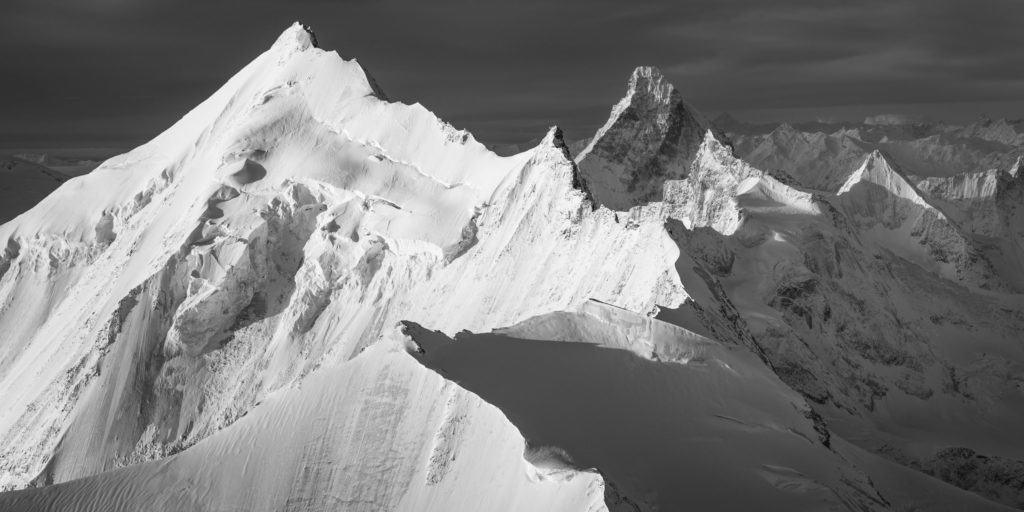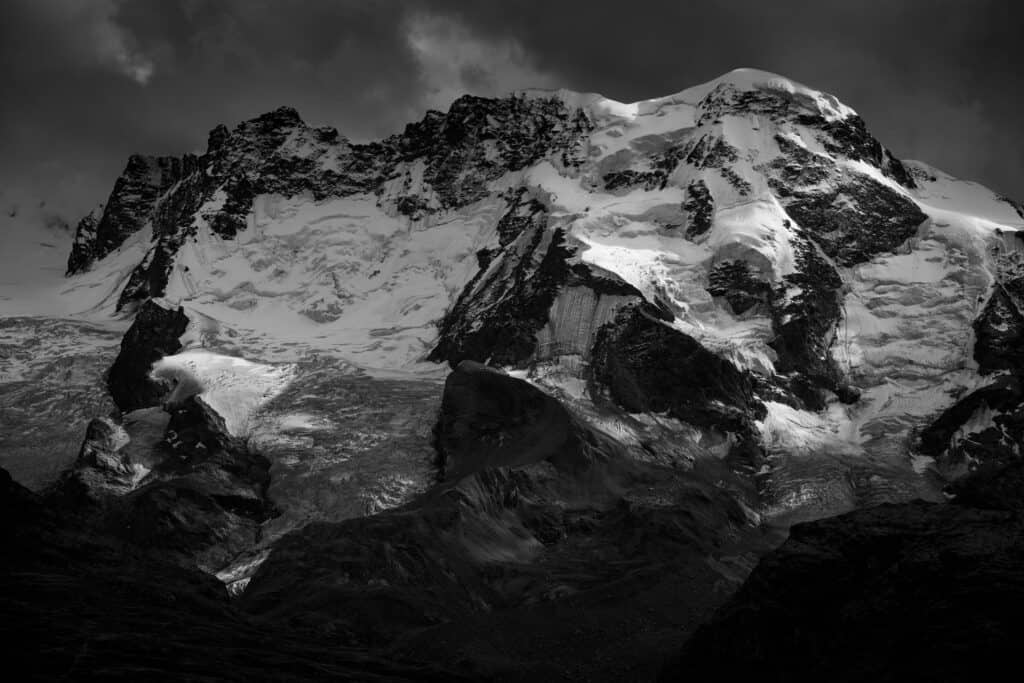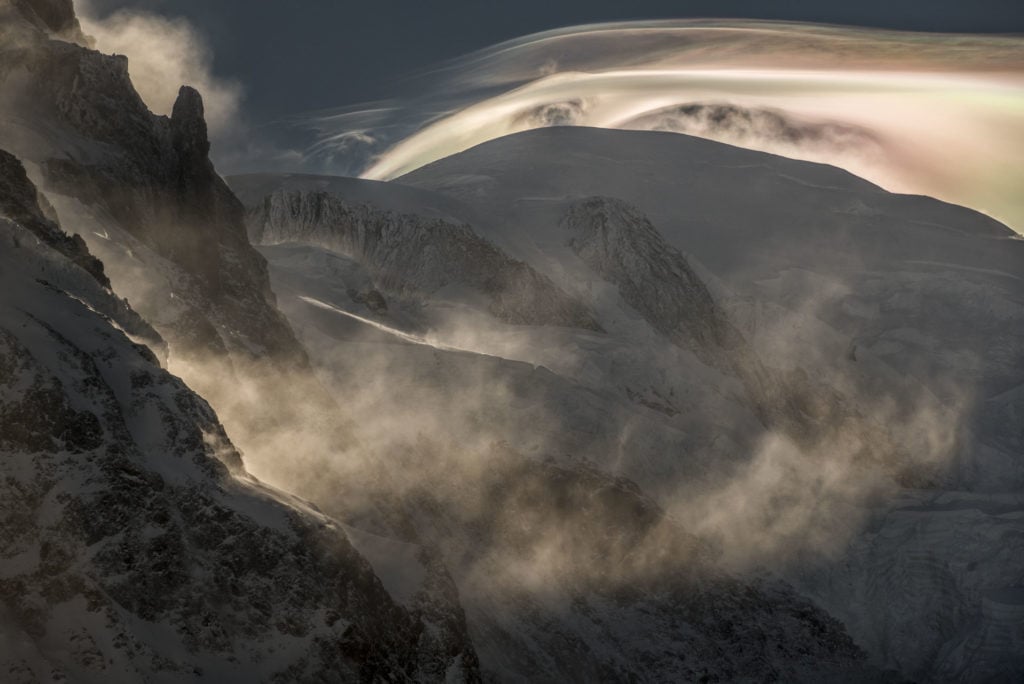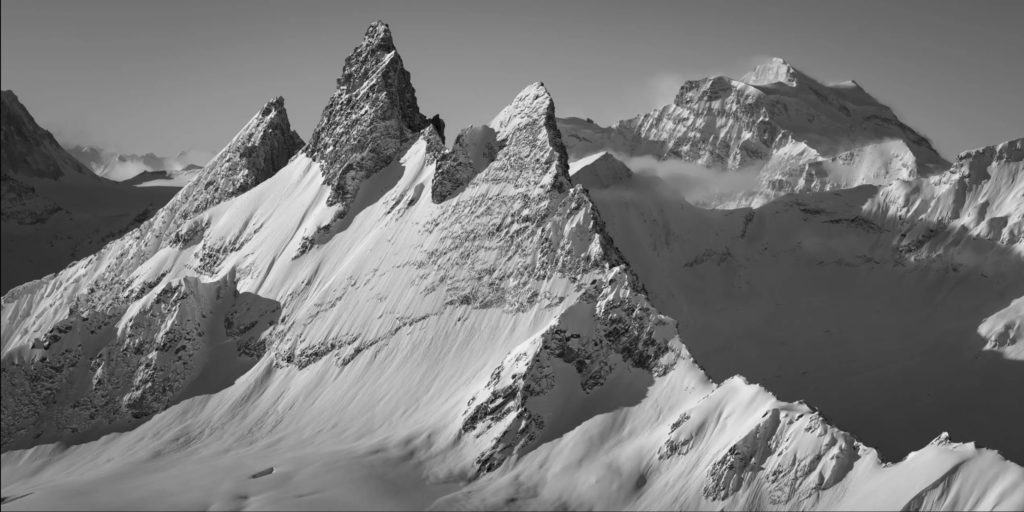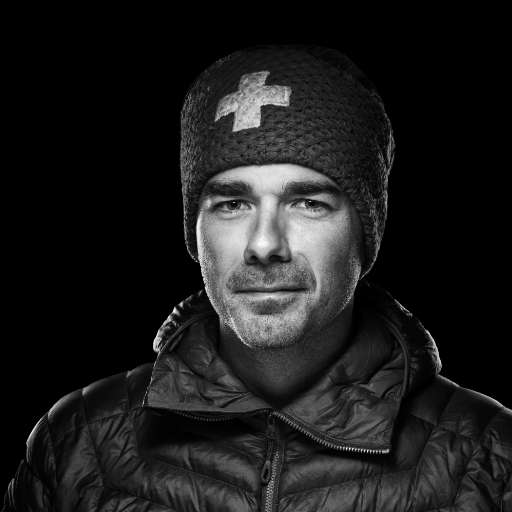Part I - Until the 1850s
The Matterhorn is undoubtedly one of the best known mountains in the world, if not the best known. Because of its isolation and its difficulty of access, it was discovered only relatively late, even if it appears on maps of the XVIIth centurylike the general map of the Swiss Cantons and the bailiwicks which depend on it, published in 1643 and probably the first to locate summit. It is only in the eighteenth century that it begins to attract attention and in the 1820s that it begins to be widely known.
A mountain with unique shapes
The Matterhorn has impressed the public and scientists alike with its characteristically slender shape, prominent prominence and isolation since it was first discovered. The unique properties of the Matterhorn made it a geological curiosity for scientists, who wondered how it was formed.
This question crosses a good part of the XIXth century and is already found in Horace-Bénédict de Saussure, one of the first to speak about this mountain. The Genevan wonders in particular what force acted on the summit to give it its current shape, but he is also very impressed by the summit, evoking a "magnificent rock". James David Forbes, glaciologist and Scottish mountaineer disciple of Saussure, is like his master struck by the mountain, which he judged without equal.

Ruskin considered the Matterhorn as a pure mountain, that is to say a mountain which, contrary to the others, has not known any form of erosion, a mountain which has kept its original shape.
Töpffer
Rodolphe Töpffer (1799-1846) is one of the most important writers on the Alps. He wrote several important and widely-read works, including Voyages en zig-zag andExcursion dans l'Oberland bernois. His Excursion in the Alps is the first lithographed journey. In 1832, he made a trip around Mont Blanc to Zermatt. He was deeply impressed by the Matterhorn, asking himself: "Where does this come from, where does the interest and charm Powerful with which this contemplates itself come from?"
Before affirming, "More than one man who forgot God in the plain, remembered Him in the mountains."
Also an artist, he offers a view of the Matterhorn from the Heibalmen, where the summit looks like a giant crystal.
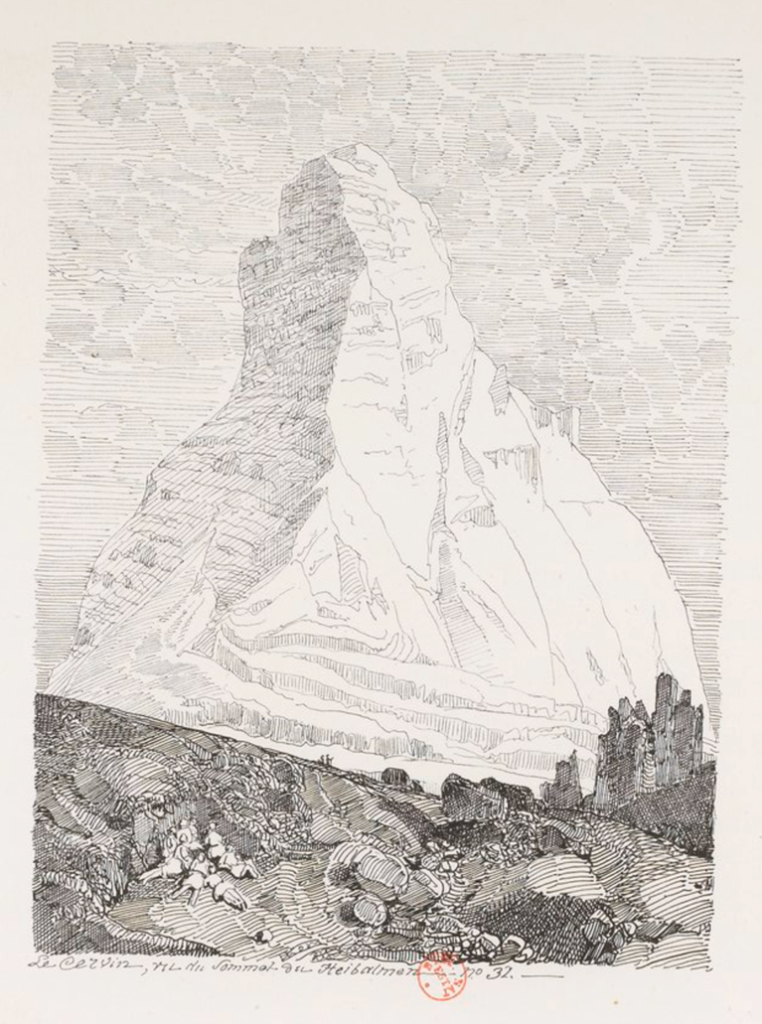
Tourism development
Tourism really started to develop in Zermatt from 1854 and the construction of the Monte Rosa Hotel by Alexandre Seiler on the basis of a small inn. The tourist guides also play an important role in the promotion of Zermatt and the Matterhorn. This is the case of the most widely read English guidebook of the 19th century, Murray's Handbook for Travellers . In the 1854 edition, Zermatt is defined as a young Chamonix, meaning that it is the new fashionable alpine resort. The 1854 edition also contains the first illustration of the Matterhorn in a travel guide.
And what about the artists?
It is obviously impossible to paint an exhaustive portrait of the representations of the Matterhorn, even if only in the 19th century. We will concentrate here on a few examples taken from the first of these.
As the discovery of the Matterhorn is late, the first representations are relatively recent. It is always dangerous to venture to say who was the first to do something, but it would seem that the first to represent the Matterhorn was Marc-Théodore Bourrit (1739-1819), in 1803, from the Theodulpass. But Bourrit does not particularly characterize the summit, drowning it in a mountain range.
Hans Conrad Escher von der Linth (1767-1823) was probably the first to propose a representation of the Matterhorn where he is recognizable, in August 1806. In fact, he represented it twice, once from Zermatton August 14, and once from Valtournanche, on August 16. As is often the case in early representations of the Matterhorn, the Matterhorn is not the sole subject of the composition; instead, Escher introduces a human presence, a church and some buildings.
If the Matterhorn began to acquire a certain notoriety in 1820, it is largely thanks to Johann Jacob Meyer 's engraving published in theHelvetischer Almanach für das Jahr 1820, also published in Philippe Bridel'sEssai statistique du Canton du Valais . Like Escher, Meyer places summit in a pastoral composition, with chalets and shepherds in the foreground. The Matterhorn is presented under its most famous profile, that of Zermatt.

First photographs of the Matterhorn
The first photograph of the Matterhorn is most probably the daguerreotype taken on August 8, 1849 by John Hobbs for John Ruskin from the banks of the Riffelsee. This lake offers the advantage of being able to photograph both the Matterhorn and its reflection in the lake. Many photographers and artists have imitated John Hobbs by setting up their easel or tripod at the Riffelsee: Adolphe Braun, Charles Gos, Gabriel Loppéetc. The Riffelsee is still today a very popular place to photograph the Matterhorn.
Riffelberg and the Gornergrat in a second time became in fact quickly privileged places to enjoy a beautiful view not only on the Matterhorn, but also on the Mount Rose. In 1850, Lady Cole even considered Riffelberg to be the best viewpoint on the Matterhorn. As early as 1840, the French artist Léon Sabatier depicted the famous summit from Riffelberg. Like many artists after him, he plays on the visual resemblance between the Riffelhorn in the foreground and the Matterhorn.
In August 1849, Gustave Dardel also photographed the Matterhorn, but from the Theodulpass. The daguerreotype has disappeared, but an image from the original photograph has been preserved. However, the copying process has turned the image upside down and the Matterhorn is upside down.

Discover the gallery of my photographs of the Matterhorn made from 2012 on this link : https://www.thomascrauwels.ch/photos-montagne/summits /photos-cervin/


